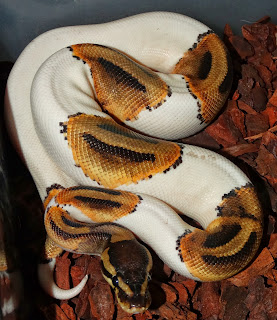AFTER BEING MOVED (have since added the third strip-light)
After spotting some small dark balls among the plants about the same size as a newt eggs which dumbfounded me, as I do not know what they are and nothing to do with the plants, I almost become confused.
A few days later I glance inside and spot that the balls have now gone a light colour and doing an exact impersonation of a newt egg! Until that is I spot a gelatinous coating! I will add that is really the wrong time of the year from my experience. Added to this the eggs are smaller than they should be and have been laid over a period of a few weeks despite there being only about two dozen of them?!
Very weird as those with experience will note that the egg laying is done rather quickly oin all European species even if they are laid singley! It might take them a couple of nights but you normally look in and see white eggs everywhere, not scrape out a couple of dozen (do not think I even have that much as yet) over a two week period?! Lol!
The possibilities are that they are newly mature or are from a wild population of a lower altitude to the norm as this would mean the climate is warmer and therefore they would breed and lay eggs in our autumn. Otherwise in the 30 degree plus heat bodies of water would not be around long enough. In the south of Iberia most species will spawn or as in the Fire Salamanders, drop their live young in and around December to early January. As this species is found in Northern Italy and not Southern Italy this does suggest that an October time would make sense for animals at lower altitudes. So you see the further south you go in Europe the later this gets, with variations depending on other factors like altitude (as affects temperature) and weather systems (freaky rain in parts of Italy caused by Northerly winds carrying cold air from the Alps clashing with EXTREMELY moist air coming from the Mediterranean across the West Coast before rolling over the Western Mountains and rolling and condensing in the valley between the Western and Eastern Apennines Mountains.
It is this latter freaky combination that drenches the Eastern Mountains where the Salamandra salamandra gigliolii live and are found frequently during daytime hours on Western faces of the mountains. Well until the sun comes up from the East and over the peaks of said mountains thereby warming everything up and evaporating any residual moisture. So probably somewhere between midday and 2pm the moisture disappears as do the Salamanders?! The Bombina found their, Bombina pachypus, also bright orange stay with the streams and pools of water so not at risk of drying out so quick as are the Salamanders. They are a diurnal animals anyway whereas all other Salamanders would extremely rarely be found wandering around during the daytime hours.
Oops I am rambling...






















































